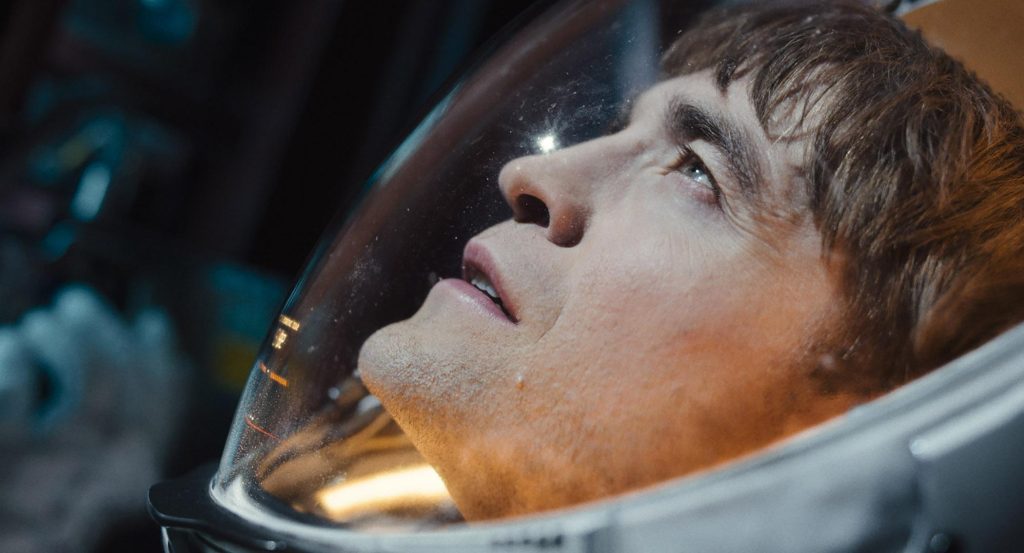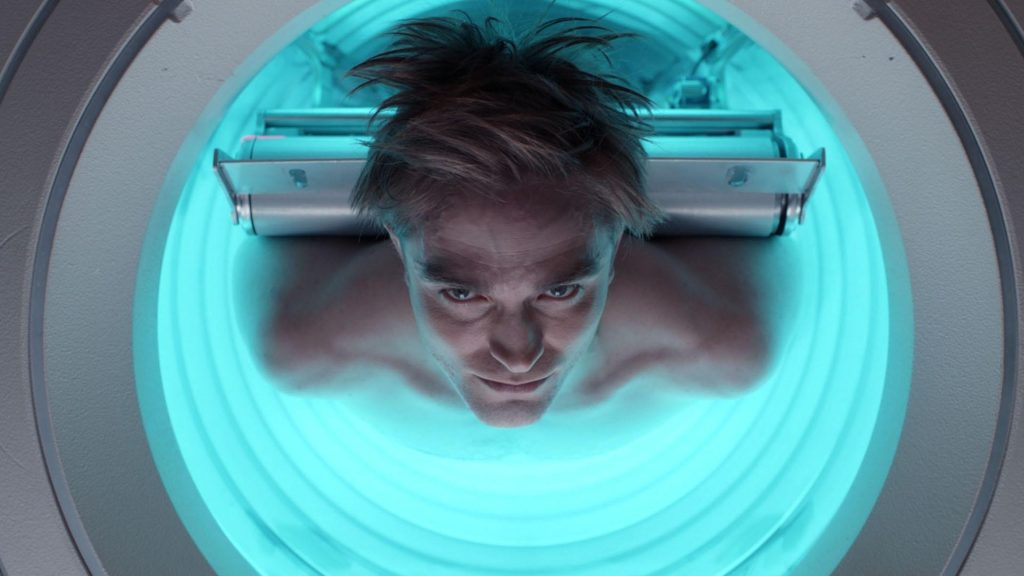Imagine dying sixteen times and remembering every excruciating detail. With “Mickey 17,” visionary director Bong Joon-ho returns to the science fiction realm he so brilliantly explored in “Snowpiercer” and delivers his most ambitious and philosophically challenging work to date—a mesmerizing meditation on identity, sacrifice, and what it truly means to be human in an age where consciousness itself has become commodified.
Quick Summary Box
| Category | Details |
|---|---|
| Movie Name | Mickey 17 (2025) |
| Director | Bong Joon-ho |
| Cast | Robert Pattinson, Naomi Ackie, Steven Yeun, Toni Collette, Mark Ruffalo |
| Genre | Science Fiction, Thriller, Drama |
| IMDb Rating | 8.5/10 ⭐ |
| Duration | 2h 22m |
| Where to Watch | In theaters |
| Release Date | January 31, 2025 |
Introduction: The Return of a Cinematic Visionary
Five years after his historic Oscar sweep with “Parasite,” Bong Joon-ho makes his triumphant return to the big screen with “Mickey 17,” an adaptation of Edward Ashton’s science fiction novel “Mickey7.” True to form, Bong transforms the source material into something uniquely his own—a genre-defying experience that combines mind-bending sci-fi concepts, pitch-black comedy, heart-wrenching drama, and sharp social commentary into a singular cinematic achievement. With Robert Pattinson delivering what might be the performance of his career in the challenging dual lead roles, “Mickey 17” stands as one of the most original and thought-provoking science fiction films of the decade.
Plot: Expendable Lives in an Unknowable Universe
In a future where Earth’s resources have been depleted, humanity has begun colonizing distant planets. These colonization efforts rely on “expendables”—disposable employees who undertake the most dangerous missions, with their consciousness uploaded to new clone bodies when they die. Mickey Barnes (Robert Pattinson) is expendable #7 on the ice planet Niflheim, having already died six times on various missions. When Mickey’s seventh iteration fails to return from a scouting expedition, the colony automatically grows Mickey #8—but then Mickey #7 unexpectedly returns, severely injured but alive.
Now, contrary to strict protocol, two versions of Mickey exist simultaneously: Mickey #7, the battle-scarred veteran who has begun questioning the morality of the expendable system, and Mickey #8, a fresh clone with all the memories but none of the physical trauma of his predecessor. As the colony faces mounting threats from both the planet’s hostile environment and mysterious indigenous creatures, the two Mickeys form an uneasy alliance, hiding their dual existence from colony leadership, particularly the ruthless mission commander Hierarchy Marshall (Mark Ruffalo).
As the narrative unfolds across multiple timelines—showing flashbacks to Mickey’s previous deaths alongside the present crisis—deeper conspiracies emerge regarding the true purpose of the colony and the nature of the expendable program itself. The two Mickeys, despite being identical in memory and consciousness, begin to develop distinct personalities as their experiences diverge, raising profound questions about identity, continuity of self, and what constitutes a “real” human being.
Performance Analysis: Pattinson’s Dual Tour de Force

Robert Pattinson delivers the most complex and technically challenging performance of his career as both Mickey #7 and Mickey #8. Rather than relying on obvious visual distinctions, Pattinson differentiates the two Mickeys through subtle shifts in body language, speech patterns, and emotional responses. Mickey #7, having endured his latest near-death experience, carries a physical and psychological weight that manifests in Pattinson’s hunched posture and weary eyes, while Mickey #8 displays the false confidence of someone who remembers trauma but hasn’t physically experienced it.
The scenes where Pattinson plays against himself showcase his remarkable range, with the actor seemingly engaged in conversation with a fully realized other self. The technical achievement is impressive, but it’s Pattinson’s emotional honesty that elevates these interactions beyond mere gimmickry. As the film progresses and the two Mickeys develop increasingly divergent perspectives on their shared predicament, Pattinson makes each version distinct while maintaining the core psychological through-line that connects them.
The supporting cast provides exceptional backing for Pattinson’s central performance. Naomi Ackie brings depth and nuance to Nasha, the colony’s engineer who forms a complex relationship with both Mickeys. Steven Yeun delivers a standout performance as Mickey’s fellow colonist and confidant whose own motivations remain tantalizingly ambiguous throughout. Toni Collette brings gravitas as the colony’s chief scientist with conflicting loyalties, while Mark Ruffalo subverts his typically likable screen persona as the coldly pragmatic Marshall whose vision for the colony doesn’t necessarily align with his superiors’ directives.
Visual Storytelling: A Frozen Nightmare of Beauty and Horror
Cinematographer Darius Khondji (who previously worked with Bong on “Okja”) creates a visual language that perfectly complements the film’s existential themes. The barren, ice-covered landscapes of Niflheim are captured in stark, wide compositions that emphasize the characters’ isolation and vulnerability. In contrast, the colony interiors are filmed in claustrophobic, artificially lit environments with a color palette that subtly shifts between sterile blues and sickly yellows as the narrative reveals the colony’s darker purposes.
Bong’s direction demonstrates his mastery of visual storytelling, particularly in how he distinguishes between various timelines and Mickey iterations. Rather than relying on obvious visual cues or on-screen labels, Bong uses subtle differences in lighting, composition, and camera movement to orient viewers in the increasingly complex narrative. A particularly effective technique is the use of long, uninterrupted tracking shots that follow Mickey through the colony, with seamless transitions between the two iterations that visually reinforce the theme of continuous yet fractured identity.
The film’s production design deserves special mention, creating a colony that feels simultaneously futuristic and improvised—a logical extension of how an actual interplanetary colonization effort might look with limited resources and practical concerns taking precedence over aesthetic considerations. The design of the cloning technology and memory transfer process avoids sci-fi clichés, instead presenting a visceral, almost medical approach that grounds the high-concept premise in unsettling realism.
Thematic Richness: The Multiplicity of Self
“Mickey 17” operates as a philosophical inquiry into several interconnected themes:
Identity and Consciousness: The film poses profound questions about what constitutes the self when memories can be perfectly transferred between bodies. If Mickey #7 and Mickey #8 have identical memories up to the point of divergence, are they the same person? The film suggests that identity is not just a collection of memories but is also shaped by ongoing physical experience and choice.
Exploitation and Expendability: Continuing Bong’s career-long examination of class structures, “Mickey 17” presents the expendable program as the ultimate expression of capitalist exploitation—workers literally valued only for their ability to die in service to corporate interests. The expendables’ position at the bottom of the colony’s social hierarchy creates a powerful metaphor for how economic systems view certain categories of workers as replaceable.
Colonialism and Indigenous Rights: Through the gradually revealed nature of Niflheim’s native inhabitants and the colony’s true purpose, the film offers a pointed critique of historical and ongoing colonial practices. The parallels to Earth’s history of colonization are unmistakable but never heavy-handed, emerging organically from the narrative.
Memory and Trauma: The film explores how trauma physically and psychologically shapes us, raising questions about whether remembered trauma is the same as experienced trauma. Mickey #8’s inherited memories of death create a fascinating case study in how knowledge of suffering differs from the suffering itself.
Cultural Impact: Elevating Science Fiction Cinema

“Mickey 17” continues Bong Joon-ho’s project of elevating genre filmmaking to the realm of serious artistic expression. Like his previous works, it uses science fiction frameworks to explore deeply human concerns, demonstrating that speculative fiction can be intellectually rigorous while remaining emotionally resonant and entertaining.
The film’s innovative approach to cloning and identity builds on the legacy of science fiction classics like “Blade Runner” and “Moon,” but takes the philosophical questions in new directions that feel particularly relevant to contemporary discussions about personhood, digital consciousness, and the ethics of emerging technologies.
Bong’s status as one of few non-English language directors to achieve major commercial success in Western markets has helped further break down the “one-inch barrier of subtitles” he famously referenced in his Oscar acceptance speech. While “Mickey 17” features predominantly English dialogue, Bong’s distinctive Korean cinematic sensibilities remain intact, continuing the cultural cross-pollination that has revitalized international cinema in recent years.
The Film’s Legacy: A New Sci-Fi Benchmark
While it’s too early to definitively assess “Mickey 17’s” long-term impact, its combination of intellectual ambition, emotional resonance, and visual innovation positions it to join the pantheon of science fiction classics that transcend genre boundaries to become part of broader cultural conversation.
For Bong Joon-ho, the film represents a successful follow-up to the unprecedented success of “Parasite,” proving that his distinctive vision can translate to higher-budget, English-language filmmaking without compromising his artistic integrity or thematic preoccupations. For Robert Pattinson, the dual role cements his status as one of his generation’s most daring and versatile actors, willing to take on challenging material that pushes both technical and emotional boundaries.
In the landscape of contemporary science fiction cinema, “Mickey 17” stands out for its willingness to trust audiences with complex ideas and ambiguous moral terrain. Unlike many big-budget sci-fi productions that simplify their premises for broader accessibility, Bong’s film embraces the genre’s capacity for philosophical inquiry and social commentary without sacrificing narrative momentum or emotional impact.
Conclusion: A Multiplicity of Excellence
“Mickey 17” is that rarest of achievements—a big-budget science fiction film that functions simultaneously as gripping entertainment, philosophical inquiry, technical showcase, and social commentary. Bong Joon-ho has created a work that rewards multiple viewings, with layers of meaning that continue to unfold upon reflection.
Like The Brutalist, which explored the intersection of art and trauma through an architectural lens, “Mickey 17” examines the fragmentation of identity and the impact of repeated trauma through science fiction. Both films demonstrate that genre cinema at its best can tackle complex philosophical questions with depth and nuance rarely found in mainstream filmmaking.
For science fiction enthusiasts, “Mickey 17” offers innovative world-building and high-concept exploration. For those drawn to character-driven drama, Pattinson’s dual performance provides emotional anchoring to the philosophical questions. And for those who value cinema as an art form, Bong’s masterful direction and visual storytelling offer a reminder of what the medium can achieve at its most ambitious.
In an era where too many films seem designed primarily to launch franchises or reinforce familiar formulas, “Mickey 17” stands as a testament to the power of singular artistic vision. It’s not just one of the year’s best science fiction films—it’s one of the most thought-provoking and masterfully crafted cinematic experiences, period.
Did You Know?
- Bong Joon-ho and Robert Pattinson spent three months developing specific physical and verbal tics to differentiate the various Mickey iterations
- The film uses practical effects and real ice locations in Norway for approximately 70% of its exteriors rather than relying primarily on CGI
- The screenplay significantly expands the ending of Edward Ashton’s novel
- Tilda Swinton was originally cast but had to drop out due to scheduling conflicts
- The film’s unusual production design incorporates recycled materials and sustainable practices both as an aesthetic choice and as a statement on resource conservation
Where to Watch
Currently playing exclusively in theaters, with IMAX screenings particularly recommended for the immersive visual experience.
If You Enjoyed “Mickey 17,” You Might Also Like:
- “Moon” (2009) – Another thoughtful sci-fi exploration of cloning and identity
- “Eternal Sunshine of the Spotless Mind” (2004) – A different approach to memory and identity
- “Blade Runner 2049” (2017) – For its philosophical approach to artificial consciousness
- “Primer” (2004) – For its complex narrative structure and philosophical sci-fi concepts

1 thought on “Mickey 17 (2025) Review: Bong Joon-ho’s Mind-Bending Sci-Fi Masterpiece Redefines Existential Horror”